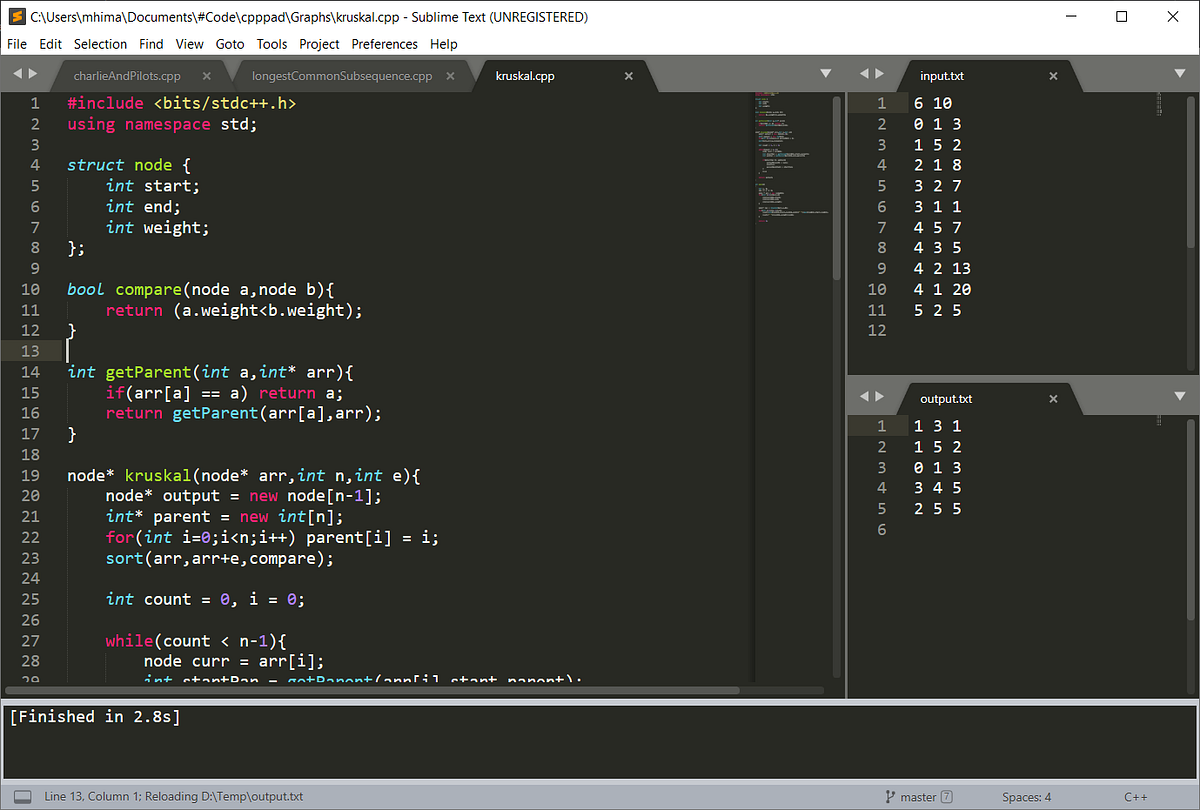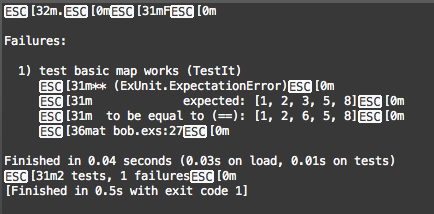

- Sublime text sftp view output panel how to#
- Sublime text sftp view output panel full#
Next, git commit and git push it to your live site. Locate the tag within the site.region file and insert the following snippet directly after the opening of your body tag: Hello, World!
Sublime text sftp view output panel how to#
This will show you how to publish code to Squarespace, and familiarize you with the workflow.

Part 1 - Making Changesīefore we get to the fun stuff, let's make a small change to the site.region file. Once you've accessed and downloaded your template files, the next step is to make a first change to template code.
Sublime text sftp view output panel full#
site-wide files - site.region, nfįor a more in-depth explanation of these template directories and their purpose, take a look at our full Template Overview. /styles stylesheet files - styles.css, styles.less. /blocks block files - JSON-T "partials" - reusable code that can be included elsewhere in your JSON-T. /assets static design assets - example: images, fonts and icons. Missing folders can be added using SFTP or Git: Our tutorial template will begin with just a nf, site.region and some basic styles in a base.less file. Specify stylesheets to be rolled up into site.css and more.ĭepending on how a particular template was designed, it may or may not include all the folders listed below. The nf file uses JSON to define the configuration of essential elements within the template. Region files are composed of standard HTML and JSON-T to render dynamic content. Typically the 'site.region' file is used as the default layout. region files describing the different layouts and layout sections (header, footer, sidebar etc.). More advanced templates can have multiple. Typically, this file is used as the global site wrapper template, containing the site header, footer, and sidebars. region FileĪ region file defines the layout of template pages. Every template must have, at a minimum, a region file (usually named site.region) and a template configuration file named nf. Template File Structure OverviewsĮach Squarespace template is made up of several template files. Note: You can also access template files via SFTP. Sublime Text and Atom are popular options. Below is an example of what the Git clone command will look like: git clone Īfter cloning the template files, open the 'template' folder in a text editor you like. Access your site's unique Git URL in the The Developer Mode panel. Once Developer Mode is enabled, clone your template files via Git. Read more about what changes you can expect while using the Developer Platform here. You'll still see all content and Style Editor options while in Developer Mode. Note: When you enable Developer Mode, Squarespace forks your template to create an identical codebase that you can edit. Read the warning message and click Yes, I understand to confirm. In the Home Menu, click Settings, click Advanced, and then click Developer Mode. Now that you have a site, the next step is to enable Developer Mode. This demo will explore the process of creating a template on the Developer Platform. Now that the background for this tutorial is established, start by visiting the Beginner Tutorial Template demo site and clicking Create a Site Like This. To get started with a Squarespace website using git, follow these steps: Create a site from the Beginner Tutorial Template If you're unfamiliar with Git, visit their documentation. Git can make cloning a template to your computer easier, and it can be a great way to manage the problems that occur when multiple people are editing code on one site. However Git has some obvious benefits when working with code. Git isn't the only option, you can use SFTP as well. Squarespace creates a hosted Git repository for each website, so that you can publish your code with git push. 
In this tutorial, you'll be using Git to publish your template code to the Squarespace servers. Check out this guide for more information on the Developer Platform's functionality and to see if it fits your needs. If you aren't familiar with writing code, here's a list of recommended learning resources. To follow this tutorial, you should understand the fundamentals of HTML, CSS, JavaScript, and Git. In this tutorial, we'll be enabling the Developer Platform on your website, setting up your development workflow using Git, and making your first edits to the template code! Let's get started working on the Squarespace Developer Platform.

Check out this guide for more information on Squarespace Developer Platform functionality to see if it fits your needs. This tutorial will help newcomers to the Squarespace Developer Platform learn by doing.








 0 kommentar(er)
0 kommentar(er)
